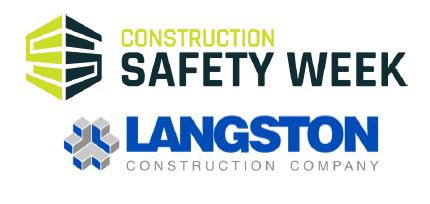
CONNECTED, SUPPORTED, SAFE
Day Three - Stay Safe
SW Day 2 - Be Safe

Safety is and always must remain a top value. Safety Week is the time to fill our safety “gas tanks” to last us the other 51 weeks of the year by giving us tools and new perspectives on safety while also retaining safety fundamentals. The fundamentals of safety are often a company’s cardinal rules, which are policies that would most likely result in death or serious physical harm if violated. Each of us has a duty to ourselves and our coworkers to be constantly aware of potentially hazardous conditions. Policies surrounding PPE, fall protection, confined space, and more are what keep us all safe and are the building blocks of a strong safety culture.
Hazard Recognition
To construct the safety plan, we must recognize the hazards. Don’t wait for an incident to happen before you develop a good attitude towards safety. Like many personal attributes, it is easier to judge a safety attitude in others than in ones’ self. Focus on “state of mind/attitude” (rushing, frustration, fatigue, and complacency) either before or during a task. We all see errors that occur each day; we are human. When you find yourself in this state of mind, take action to prevent an error by:
- Self-Trigger – Recognize the state of mind that you are in and do something before you make a mistake.
- Analyze close calls/near misses.
- Look for patterns that increase the risk of injury with everyone around you.
Understand the Safety Plan
While the contents of the safety plan will change from company to company and even from task to task, take the time to educate yourself to ensure you know the minimum requirements for each job before you start to stay safe. Some policies are in place due to lessons learned and may be modified from time to time. If an item is not well defined, take the time to ask your supervisor for clarification. Safety policies do not end with the job’s daily activities. Proper PPE is key to staying safe. Although it is the last line of defense, we must all remain committed to safety by supplying our crews with the equipment and gear that will keep them safe each day.
Be Willing to Ask for Help
Sometimes to stay safe, we must accept that we can’t do a particular job by ourselves. Material handling and confined space entries are two instances where teamwork is necessary. We must rely on coworkers to “give us a hand” in times like these. Accidents are more likely to occur if we are reluctant to ask someone to assist with certain tasks. We all need help occasionally, so being too shy, too macho, or too experienced to ask for help isn’t worth an injury. After all, wouldn’t you
be happy to give someone else a minute or two of your time to prevent an incident from occurring?
Appreciate Teamwork
It takes everyone working together cooperatively in the workplace to stay safe. You can do a lot to maintain your safety, but you can’t be totally safe all by yourself. Safety is a team effort. Teamwork means taking the time to teach someone else a safer way to do the job or correct a condition you think might be a hazard. Cooperation of this sort is necessary to stay safe both in the workplace and in our everyday lives.

